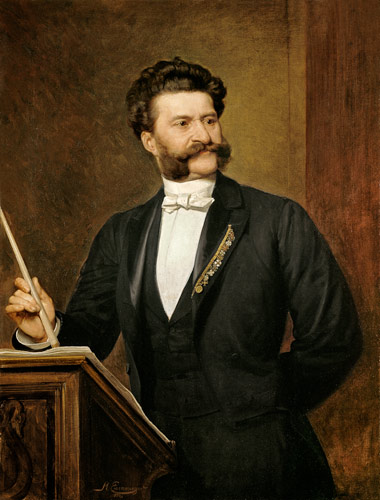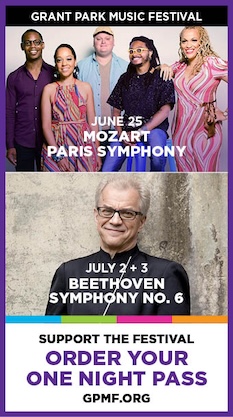Chicago’s Strauss concert takes the chill out of the New Year

When you have Ukrainian ballet dancers singing Auld Lang Syne on the stage of Orchestra Hall, that can only mean one thing — the “Salute to Vienna” New Year’s concert, which took place Monday afternoon at Symphony Center.
In 1995 the Austrian promoters Attila and Marion Glatz saw an opportunity to capitalize on the popularity of the Vienna Philharmonic’s televised New Year’s Day concert, and its festive mix of Strauss waltzes and polkas, operetta excerpts and convivial high spirits.
Now in its 17th year, the “Salute to Vienna” concerts take place across a dozen North American cities with conductors and singers experienced in the Viennese idiom partnering with local orchestras.
This year’s local installment once again featured a large component of the Chicago Philharmonic as “The Strauss Symphony of America,” this time led by Andras Deak.
Deak hails from Budapest, “the second greatest city on the Blue Danube” as he wryly noted. The program opened with a rousing rendition of von Suppe’s Light Cavalry Overture and throughout the afternoon, the Hungarian conductor proved a genial host and deft podium hand, forcefully pointing up dynamic contrasts, leaning into the waltz rhythms and providing the requisite holiday fizz.
As always, the program scored by having some lesser-known works amid the Viennese chestnuts, like Josef Strauss’s Dynamiden Waltzes. Here and in Johann Strauss Jr.’s Emperor Waltzes, the orchestra was joined by six dancers from the Kiev-Aniko Ballet of Ukraine, who provided a graceful visual counterpoint to the lilting melodies.
Rather than the usual young up-and-coming singers, this year’s concert featured two veterans of the Vienna operetta milieu, Renee Schüttengruber and Wolfgang Gratschmaier. I’m not sure either needed any amplification in this venue, but the duo were clearly characterful stage creatures, albeit more suited to the comic aspect of operetta, as reflected in the selections.
Gratschmaier has a pleasing if somewhat dry-toned tenor but certainly enlivened the proceedings with his peripatetic stage presence in an aria from Lehar’s Paganini and — a real rarity– the Ahnl-Lied from Karl Zeller’s Der Vogelhandler, sung in English.
Likewise Schüttengruber’s soprano is not in the first flush of youth but she brought vital vocalism and long stage experience in the Countess’ entrance aria from Wiener Blut. The singer was even more of an uninhibited presence in her overserved rendition of the drinking song adapted from Strauss’s Krapfenwaldl Polka, swigging from a large champagne bottle and offering a glass to a startled man in the first row. The vocalists teamed up for equally exuberant duets from Kalman’s Countess Maritza and The Gypsy Princess.
This year’s program toyed a bit with the traditional encores. Those who bolted after the end of the printed program missed a lightly sprung performance of On the Beautiful Blue Danube, which could have used a bit more Viennese warmth and tonal richness.
Deak then brought Schüttengruber and Gratschmaier back out for the Merry Widow waltz duet, which the age-appropriate singers underplayed nicely, bringing the right bittersweet nostalgic ache to this reunion of a couple with a long and tortuous history. Auld Lang Syne — a North America accretion that goes unheard in Vienna — followed, with the boisterous and traditional Rakoczy March sending the audience out, musically fortified, to brave the winter chill.
Posted in Performances

